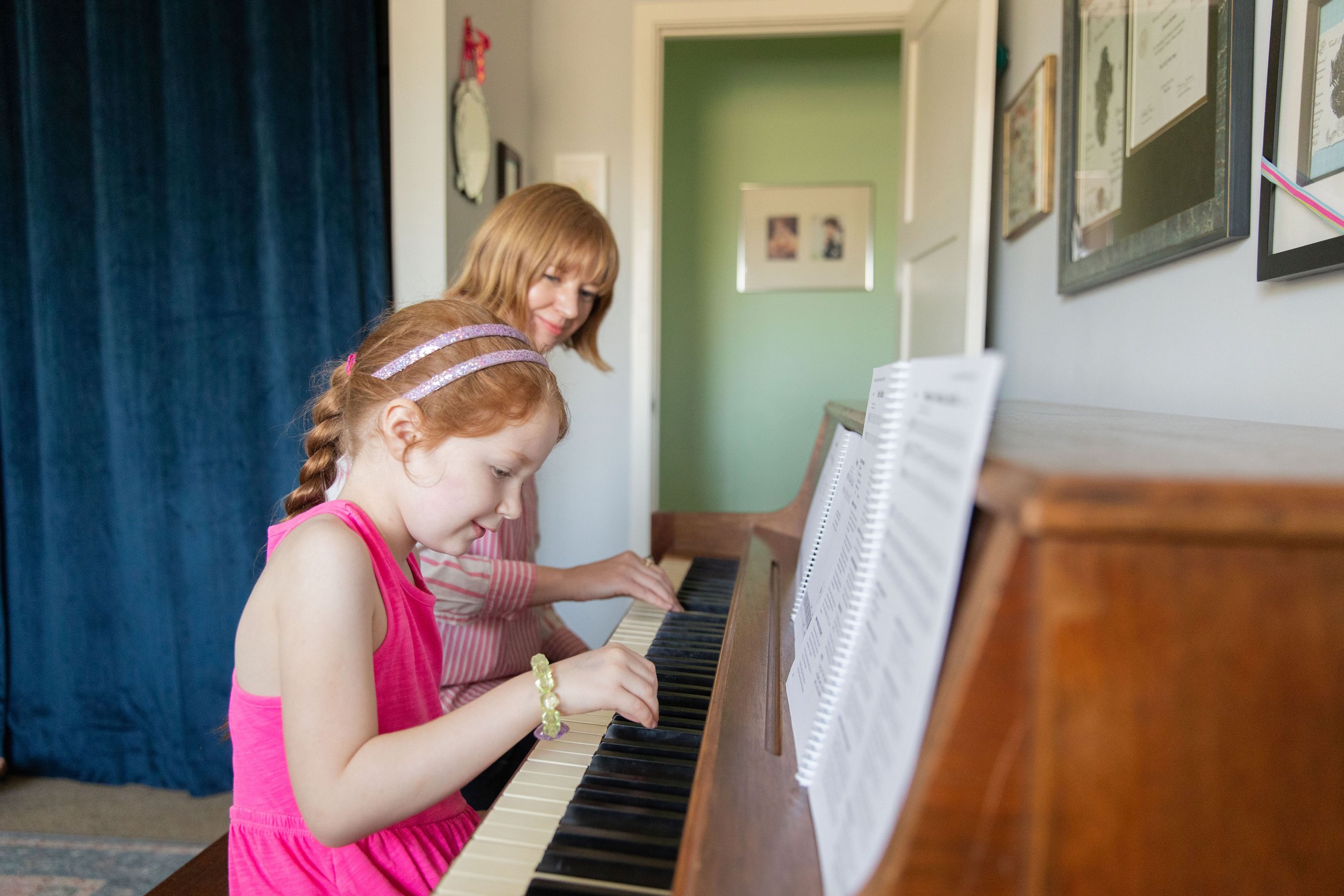
What’s special about Cadences and Keys?
My lessons are based on Music Learning Theory, which describes the way we learn music and make music. My lessons focus on a skill called audiation. Audiation is to music what thought is to language. It’s the ability to hear music in your head before you perform it, to create unique musical ideas, and to understand the music you hear.
Children learn music the same way they learn language. First, they listen and absorb it. Then they enter music “babble-” they try out sounds and movements. They learn musical patterns the way they learn individual words, and then they use those patterns together to make musical thoughts, the same way children learn to think thoughts using language. Years after they first begin to absorb language, kids learn to read and write; so too with music, we spend years developing an aural understanding of music before we learn to read and write music.
Most traditional music teaching methods start with reading music. Imagine if we taught children language by showing them the alphabet first, and asking them to read before they could speak! Music is an aural art, and must be learned through the ears first.
Perform with confidence
Students learn to recognize and perform patterns with ease and musicality.
Create something new
Students learn to improvise and create new ideas the same way a language learner creates new sentences.
Read music
When students have a mastery of musical patterns they can learn to read music with true understanding.
Looking for a better way to do music lessons?
Looking for piano lessons kids won’t want to quit, because they’re both enjoyable and meaningful?
Looking for voice lessons that teach students how to improvise and read music, as well as healthy vocal technique?
Looking for music classes for young children that are not only fun, but also build a foundation for real musical skills?
All lessons at Cadences and Keys are based on research known as Music Learning Theory. It describes how we learn music and how we become musical thinkers.
Students who learn this way become lifelong musicians who can confidently sit at the piano and play with expression and flow, come up with their own musical ideas, and improvise; who can sing in harmony with others and improvise with their voices; and most importantly, who find incredible satisfaction and enjoyment in music.
Meet Chantel
With a bachelor's degree in vocal performance and a master's in music education from ASU, I have been teaching in the valley for more than 10 years, with over 5 years of experience teaching elementary general music, 6 years conducting elementary choirs, 9 years of teaching early childhood music at the Musical Instrument Museum, and 3 years of teaching privately. I sang with the professional choir Solis Camerata for several years and currently serve as the alto section leader for the Sonoran Desert Chorale. I have always loved teaching foundational musical skills and particularly enjoy working with children. I have two children of my own, ages 5 and 2; they love singing, dancing, and playing piano!
FAQs
Where did the word “audiation” come from?
It was created by the music learning researcher, Edwin Gordon. His extensive research has been synthesized into what is called “Music Learning Theory.” It is a theory, not a method; it expresses generalizations about the ways children learn music, which can be applied in any musical learning situation in different ways. These generalizations include the best sequences for musical learning as well as different stages of musical learning, which have been applied as a piano method by Marilyn Lowe in her Music Moves for Piano series. These concepts can also, of course, be applied to any instrument or setting, including voice lessons. Visit the Gordon Institute of Music Learning website here for more information.
When will my child learn to read music?
The short answer: it depends on how long they’ve been taking music lessons. The process of acculturation and musical understanding takes time, and reading music too soon stifles audiation, as children focus on what they see rather than what they hear. In general, it takes a few years before children are ready to start reading music. If they’ve been engaged with audiation-based teaching from a young age, they may start reading around age 11. As Marilyn Lowe has said, we don’t delay music reading; we maximize learning.






